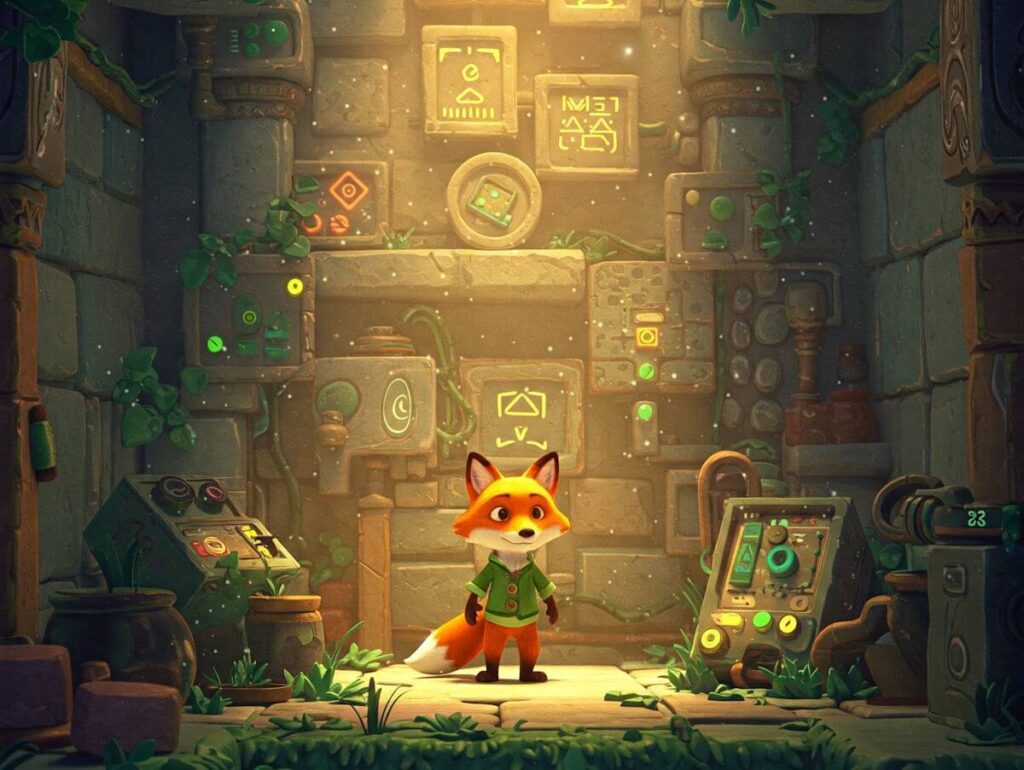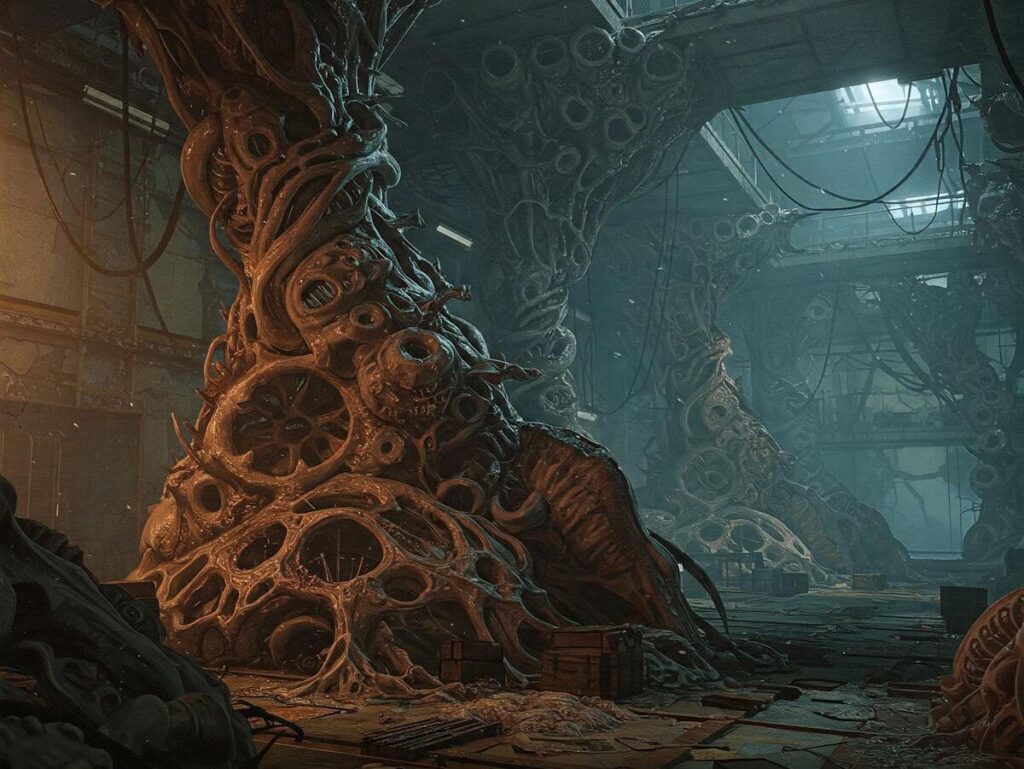The game Tunic captivates players not only with its charming aesthetics but also with its intricate puzzle design that significantly enhances gameplay and narrative immersion. At its core, Tunic intertwines exploration and discovery, encouraging players to delve into its complex world. The puzzles within Tunic are not merely obstacles; they serve as integral elements that contribute to the overall experience and understanding of the game’s storyline. Each puzzle is crafted meticulously, presenting players with challenges that require keen observation and critical thinking.
The significance of puzzles in Tunic extends beyond simple problem-solving; they often reveal deeper lore and secrets that enrich the player’s journey. The game emphasizes a sense of curiosity, inviting players to explore every nook and cranny of its beautifully designed environments, where cryptic clues and hidden mechanisms await discovery. As players navigate through the lush landscapes and mysterious dungeons, the puzzles encourage them to piece together fragments of the narrative, promoting a sense of agency and accomplishment.
Moreover, the design of these puzzles exemplifies the delicate balance between challenge and accessibility, catering to a wide range of players. While some puzzles may present formidable challenges, they often incorporate intuitive clues that can lead to an “aha!” moment, making the rewarding feeling of solving each riddle even more satisfying. By integrating puzzles seamlessly into the gameplay, Tunic sets a milestone for narrative-driven games, proving that puzzles can drive a story forward while enhancing the player’s overall experience. In the upcoming sections, we will explore individual puzzles and how they contribute to the larger tapestry of Tunic’s engaging adventure.
Puzzle Overview: The Anticipation of Discovery
Tunic is renowned for its diverse array of puzzles, which play a pivotal role in shaping the overall gameplay experience. Players can expect to encounter three primary types of challenges: environmental puzzles, combat challenges, and riddle-based obstacles. Each category not only tests a player’s problem-solving skills but also enhances the immersive aspects of the game.
Environmental puzzles often involve intricate map designs that require players to interact with their surroundings in innovative ways. Such puzzles may include moving blocks to create paths, deciphering map symbols, or unlocking hidden areas by activating specific mechanisms. The anticipation that comes with discovering these cleverly hidden secrets can ramp up engagement, as players are encouraged to explore the lush and detailed world of Tunic thoroughly.
Combat challenges introduce a different flavor of puzzle-solving. Players must master various mechanics, such as dodging enemy attacks, exploiting weaknesses, or utilizing resources wisely during combat. These encounters not only demand skill but also strategic thinking, as players must assess their environment and adapt quickly to the dynamics of each battle. Successfully navigating these situations fosters a sense of accomplishment and drives players to refine their tactics continuously.
Riddle-based obstacles often manifest as cryptic clues or enigmatic tasks embedded within the game’s narrative. These riddles require players to think outside the box and apply deductive reasoning to unravel the mystery. The allure of solving intricate riddles further stimulates curiosity, compelling players to delve deeper into the lore of Tunic while finding joy in their intellectual triumphs.
In combining these elements, Tunic fosters a rich and engaging environment where players are not merely passive observers but active participants in their journey. As players confront diverse puzzles that challenge their creativity and critical thinking, the joy of discovery becomes its own reward, enhancing their overall gaming experience.
Key Puzzle #1: The Temple of the Blue Flame
The Temple of the Blue Flame is one of the initial major puzzles players face while navigating the captivating world of Tunic. This enigmatic structure is designed with intricate components that challenge players’ problem-solving abilities, combining both logical reasoning and dexterity. At its core, the puzzle revolves around the manipulation of flame and light, guiding players toward the ultimate goal of unlocking the next stage of their adventure.
Upon entering the temple, players are greeted with a series of symbols etched into the walls, representing various elemental motifs. These symbols hint at the mechanics required for solving the puzzle. Initially, the players must activate several blue flame sources scattered throughout the temple. This requires careful observation and an understanding of how the flames interact with various objects in the environment. Achieving this often involves navigating tricky platforms and timing jumps accurately to avoid extinguishing the flames.
Common challenges include misjudging jumps or failing to activate multiple flames simultaneously, leading to setbacks. Players may also find themselves perplexed by the order in which to activate the flames or struggle with the platforming challenges presented by the temple’s layout. To overcome these hurdles, patience and perseverance are crucial. Taking time to understand the temple’s design will yield clues on how to proceed without unnecessary frustration.
The solution to the Temple of the Blue Flame puzzle consists of following a step-by-step process: first, players should focus on activating the initial flame, then move systematically through the other flame sources while ensuring they maintain their light. Observing the illumination patterns created by the flames can aid in forming a strategic plan. Lastly, maintaining awareness of the environment will help players identify hidden paths and alternative routes, ultimately making a successful escape from the temple much more achievable.
Key Puzzle #2: The Mysterious Code
The Mysterious Code in Tunic presents a significant challenge to players, inviting them to engage in an intricate riddle-based experience. Players must decipher various codes hidden throughout the game world, a task that encourages keen observation and analytical thinking. The allure of this puzzle lies in the satisfaction derived from uncovering its secrets and the sense of achievement that follows successful decoding.
To begin, players should explore their surroundings meticulously, as clues are often cleverly integrated into the environment. Hidden messages may be found on walls, within books, or even as part of the scenery itself. It is advisable to keep an eye out for unusual symbols or sequences that might hint towards the code. Players can enhance their decoding efforts by taking notes on these symbols and any accompanying context that appears relevant, ensuring that no detail is overlooked.
Developing a strategy can also be incredibly beneficial when tackling The Mysterious Code. It might be helpful to start by identifying patterns within the symbols. Weaving together various clues can provide insights into potential translations or meanings. Players should feel encouraged to experiment with the identified elements, as trial and error is a fundamental aspect of puzzle-solving in Tunic.
The sense of satisfaction that accompanies successfully decoding a message is palpable, serving as a reward for the time and effort invested. When players finally uncover the meanings behind the enigmas, they often experience a profound sense of achievement, reinforcing their engagement with the game. The process not only challenges their cognitive skills but also deepens their connection to the fantastical world of Tunic, making the resolution of The Mysterious Code a memorable milestone in their adventure.
The Forest of Dilemmas
The Forest of Dilemmas presents one of the most intricate puzzles in the Tunic game, inviting players to confront a myriad of choices and their consequences. As players navigate through this lush environment, they encounter several paths, each leading to unique outcomes and hidden areas. The design of this puzzle underscores the importance of decision-making in gameplay, as players must carefully assess their options to unlock the full potential of the forest.
Within the forest, players can choose from multiple routes that appear to diverge dramatically from one another. For instance, taking the left path may lead to a rewarding encounter with a powerful artifact, while the right path could plunge players into a dangerous situation with formidable opponents. These decisions not only affect immediate gameplay but can also resonate throughout their adventure, ultimately influencing the game’s narrative flow.
To optimize player decisions in the Forest of Dilemmas, it is essential to thoroughly explore the surroundings before making a significant choice. Paying attention to environmental cues or NPC (non-playable character) dialogue may provide hints that can guide players in the right direction. Additionally, players should consider the potential for re-exploration; if an initial choice does not yield favorable results, returning to previous points in the forest can often reveal alternative paths or strategies.
Moreover, players should remain aware of how actions might unlock hidden areas. For instance, completing a specific quest tied to an NPC may unveil a secret trail that leads to treasure or a shortcut back to known locations. Engaging with the puzzle’s complexity will not only enhance the gaming experience but also encourage a deeper understanding of the narrative woven throughout the forest. Ultimately, success in the Forest of Dilemmas hinges on astute choices and exploration, offering rewards for those who are willing to delve deeper into its mysteries.
Strategies for Solving Puzzles in Tunic
When engaging with the intricate puzzles of Tunic, players may find themselves confronted with challenges that require a mix of skill, insight, and strategic thinking. To effectively tackle these puzzles, several strategies can help improve the overall experience and increase the likelihood of success.
First and foremost, cultivating strong observational skills is essential. Players should attentively examine every aspect of their environment, as clues to puzzle solutions often lie in the smallest details. Elements such as patterns, colors, and even peculiar items may reveal hidden meanings or suggest actions required to progress. By honing one’s ability to notice these subtleties, players can unlock new avenues for exploration and problem-solving.
Taking thorough notes can also prove invaluable when attempting puzzles in Tunic. As players encounter various clues or hints, documenting these elements assists in organizing thoughts and recognizing connections that may not be immediately apparent. A methodical approach to note-taking can provide clarity during moments of frustration, allowing players to step back and review information without the pressure of relying solely on memory.
Patience is another vital component when faced with challenging puzzles. Instead of rushing through scenarios in search of immediate solutions, players should allow themselves the time to experiment with different strategies. Approaching a puzzle from a new angle or stepping away for a short duration can often result in unexpected insights that lead to resolution.
Lastly, utilizing the environment effectively can enhance problem-solving abilities in Tunic. Understanding how the game mechanics interact with the surroundings can open up alternative paths or solutions that may not be obvious at first glance. Players should actively experiment with various tools and approaches to engage the environment to their advantage. Developing a flexible mindset can help overcome roadblocks and foster a greater appreciation for the intricate design embedded within Tunic’s puzzles. By implementing these strategies, players are better equipped to navigate the challenges posed by the game and enjoy a more rewarding experience.
Community Contributions: Player Solutions and Theories
The collaborative spirit within the Tunic community has yielded remarkable insights into the game’s intricate puzzles. Players from various backgrounds actively engage in forums and social media groups, where they share their experiences and interpretations. Platforms such as Reddit, Discord, and dedicated gaming websites have become hubs for discussion, allowing players to connect over their shared enthusiasm for Tunic’s challenging design. This vibrant interaction fosters a rich dialogue that enhances individual and collective understanding of the puzzles.
Players often showcase their creative solutions to the game’s enigmatic challenges. These contributions, ranging from simple strategies to complex theories, provide alternative perspectives that enrich the gameplay experience. For example, an ingenious community member might devise an unexpected method for solving a seemingly intractable puzzle by correlating game mechanics with environmental clues. Among these contributions, notable players have shared videos and walkthroughs that break down puzzles step by step. Their presentations, often imbued with humor or insightful commentary, make the problem-solving process more accessible and enjoyable for others.
Moreover, the active discussions surrounding Tunic’s intricacies highlight the diversity of thought present in the player community. Each player brings unique interpretations and ideas influenced by their backgrounds and gaming experiences, which opens avenues for further exploration. This synergy creates an environment where players feel encouraged to experiment with different strategies, ultimately leading to a deeper appreciation for the game’s design and narrative. Social media platforms have also allowed players to showcase their artistic interpretations related to puzzles, adding another layer of depth to community contributions. As the game continues to engage and challenge players, the ongoing exchange of solutions and theories stands testament to the power of collaboration in unraveling Tunic’s many mysteries.
The Impact of Puzzles on Gameplay Experience
Puzzles are a fundamental aspect of gameplay in many titles, and in “Tunic,” they play a vital role in shaping the player’s overall experience. The intricate design of puzzles not only promotes critical thinking and problem-solving skills but also enhances immersion in the game’s enchanting world. A well-constructed puzzle can create a sense of achievement, fostering a rewarding cycle of challenge and accomplishment that keeps players engaged.
The balance between challenge and enjoyment is paramount when integrating puzzles into gameplay. As players encounter tricky challenges within “Tunic,” they often experience a range of emotions. Initially, the thrill of solving a complex puzzle may be accompanied by moments of frustration. However, overcoming these obstacles often culminates in a satisfying revelation, as players unlock new areas or obtain significant game resources. This dynamic can lead to deeper engagement with the story and environment, as players are compelled to explore and invest time in unraveling the mysteries that lie within.
Moreover, the design of the puzzles in “Tunic” emphasizes exploration and discovery. Players are encouraged to interact with their surroundings, leading to a sense of wonder and excitement. This sense of discovery is amplified when puzzles are intricately linked to the game’s narrative and mechanics, making the player’s accomplishments feel integral to the larger experience. Conversely, poorly designed puzzles can detract from gameplay, resulting in frustration that may spoil the overall enjoyment. Striking this balance is essential for crafting memorable gaming experiences, where the process of solving the puzzle becomes as enjoyable as the outcome.
In conclusion, the puzzles in “Tunic” significantly contribute to the gameplay experience by fostering engagement, encouraging exploration, and establishing a rewarding cycle of challenge and achievement. The delicate balance between frustration and satisfaction is critical in ensuring that players remain motivated and invested in the captivating world of “Tunic.”
Conclusion: The Art of Puzzles in Tunic
Puzzles in Tunic stand as a testament to the careful craftsmanship that defines the game’s design. Throughout the post, we have explored various types of puzzles, each contributing to the overarching narrative and immersive experience that Tunic offers. The complexity and intricacy of these challenges not only demand intellectual engagement from players but also cultivate a sense of achievement when successfully navigated. This blend of difficulty and satisfaction is, perhaps, what makes puzzles a distinctive feature of the game.
Moreover, the artistry involved in creating puzzles within Tunic is remarkable. Developers have skillfully intertwined environmental storytelling and gameplay mechanics, drawing players into a world where each riddle feels organically integrated into the landscape. The strategic placement of clues and the underlying themes zapping through the puzzles enhance the overall atmosphere, maintaining the intrigue and wonder throughout the journey. This harmonious relationship between challenge and aesthetics exemplifies why puzzles are a beloved aspect of gaming.
As you engage with the various puzzles in Tunic, it is crucial to approach each obstacle with a mindset open to exploration and discovery. The satisfaction derived from overcoming a particularly challenging puzzle is often enhanced by the joy of uncovering hidden secrets and connections within the game. Players are encouraged to embrace their journey, sharing their personal experiences and insights regarding the puzzles they have faced, whether they found joy or frustration within them. This sharing of thoughts can foster community discussions that enrich the overall experience of Tunic.
Ultimately, the puzzles in Tunic are more than mere challenges; they are an art form that enhances the narrative, invites curiosity, and engages the player’s intellect. By appreciating the artistry behind these puzzles, one can fully immerse themselves in the enchanting world of Tunic.





